Naxos, the largest of Greece’s Cyclades islands, is a majestic destination that combines a variety of geographical features. Towering mountain masses that rise up to 999 meters, rugged cliffs, winding valleys, fertile and lush plains, and long sandy beaches—all can be found on Naxos.
The island, which holds great significance in Greek culture, is rich in historical heritage and legends. Known as the birthplace and childhood home of Dionysus, the god of joy and wine, Naxos is home to historic mountain villages perched on hilltops and ancient harbor towns nestled in sheltered bays. Here, the traditions of flavor, music, and dance have been kept alive by cheerful locals for centuries.

Table of Contents
Naxos is one of the rare self-sufficient islands, thanks to its fertile lands that yield abundant crops and its pastures that support flocks of sheep, goats, and cattle, providing a variety of cheeses, milk, and yogurt.
The island is steeped in mythology and history. Naxos is home to the Zas Cave, where Zeus was raised, and is said to be the place where Dionysus married Princess Ariadne and where Apollo was revered as a divine figure. The island boasts temples, monuments, churches, and settlements spanning from antiquity, starting in the 8th century BCE, to the present day.
Undoubtedly, the most iconic site is the colossal marble Temple of Apollo on the islet of Palatia, located at the entrance to the port. Featuring four massive marble blocks, each weighing 20 tons, that form a gateway-like structure, the temple is a defining symbol of the island’s sunsets.
After the era of Ancient Greece, Naxos came under the rule of the Romans, Byzantines, Venetians, and Ottomans, leaving behind a rich tapestry of architectural heritage and cultural influences from each period.
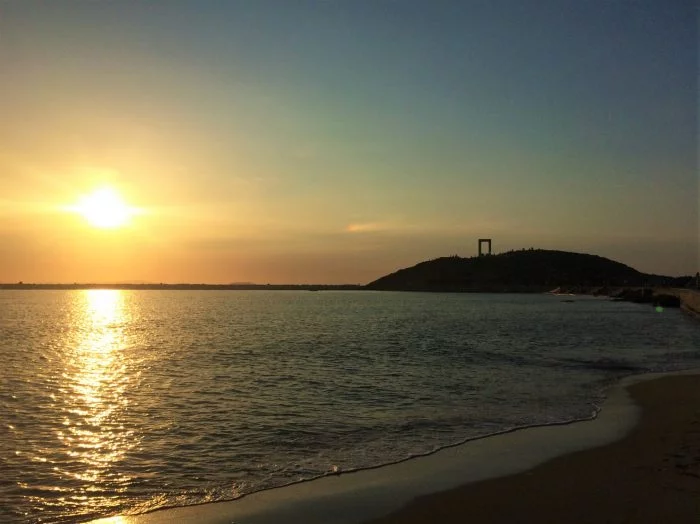
Famous for its marble, Naxos is home to numerous ancient temples, sanctuaries, and statues. In addition to the Temple of Apollo, the island features the remnants of the Yria sanctuary dedicated to Dionysus, the Temple of Apollo and Demeter in Gyroulas, the statue of the young Apollo near Apollonas, and two unfinished 5-meter-long archaic kouroi (male statues) resting under an old oak tree in Fleriós. Additionally, there is a 10-meter-long kouros with a broken leg lying in Farangioú, as well as the ruins of the ancient city of Grotta—all must-see attractions for archaeology enthusiasts.
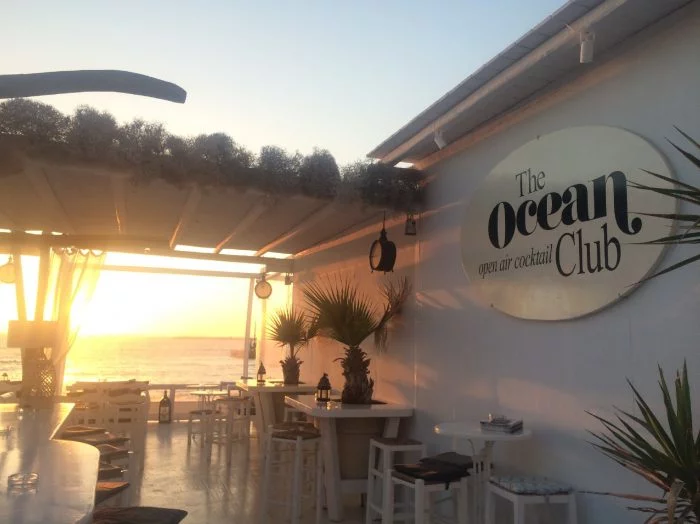
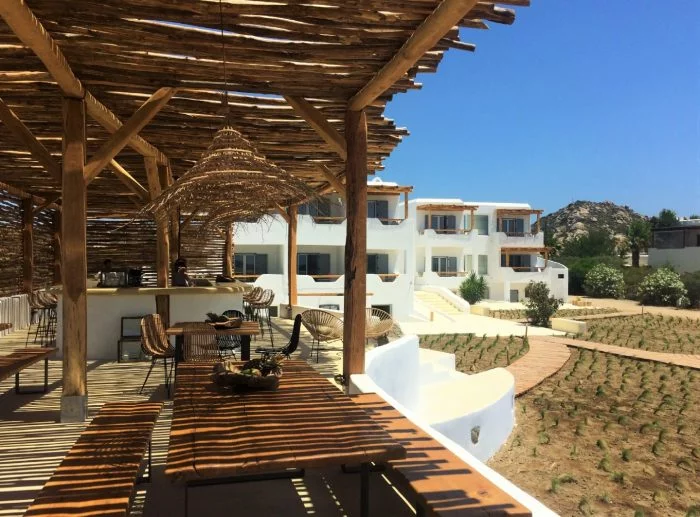
For those interested in Christian history and architecture, noteworthy sites include: Panagia Drossiani, located in the Trageá region between the villages of Halkí and Moní, which dates back to the 6th century and features some of the oldest frescoes in the Balkans; Christ Photodotis Monastery, the island’s oldest and largest monastery and tower, also from the 6th century, perched on the hills of Danakos village; and Panagia Protothronos Church, a 7th-century gem located in Halki village.
Nature lovers can be enchanted by hiking through the trails of Trageá or swimming in the secluded beach coves of Kouroúpia, located at the easternmost part of the island.
The old city of Naxos, Kastro, is marked by Venetian towers that carry traces of the Frankish period. Another neighborhood from the Middle Ages is Bourgos, a bourgeois district with narrow streets located just below Kastro. Beneath the old city lies the ancient city, which hosts remnants from the Mycenaean period.
For hundreds of years, the island has been inhabited year-round, and its rich craftsmanship traditions, such as embroidery, weaving, ceramics, stone, wood, silver, and gold craftsmanship, have been preserved as part of its cultural heritage.

Naxos Old Town Routes
The old town area, consisting of the Venetian castle district, Kastro, and the Bourgos neighborhood, along with the Naxos port, is worth visiting early in the morning, or in the evening and at night to avoid the heat.
Kastro: In the 13th century, Naxos became the capital of the island under Venetian rule. The hilltop section of the old town, Kastro, located behind the fortifications built by the Venetian Duke of Naxos in 1204, is home to Venetian-style tower houses, flower-filled courtyards, museums, and art galleries. When entering the old town through the Trani Porta gate, you will come across the Della Rocca Barozzi Tower, one of Kastro’s oldest mansions. This building, with its original architecture and furniture preserved, now serves as the Venetian Folk History Museum. Nearby is the Crispi Tower, the only one of Naxos’ 12 towers still standing, which today serves as the Byzantine Museum. As you walk toward the main square of Kastro, you will pass the Catholic Cathedral. Behind the cathedral is the Orthodox Church of Panagia Theoskepasti. To the east of the church is the Capuchin Monastery. The street leading upwards reaches the Naxos Archaeological Museum. In this five-story mansion, which was also used as the Old Trade School, thousands of years-old statues found during archaeological excavations on islands like Naxos, Keros, Donoussa, and Koufonissia are exhibited, including Mycenaean-era ceramics and Roman-period gold, silver, copper, and glass objects. The museum’s standout feature is the floor mosaic depicting a half-naked woman riding a sea monster. Right next to the museum is the 13th-century Capella Kazatza church. Diagonally across from it is the Ursuline School & Monastery, which opened as the country’s first girls’ school in 1739. After undergoing renovations, the building now serves as a cultural, artistic, and educational center. The design shop located on the ground floor sells stunning modern pieces by Greek designers.
Bourgos: Located just below the castle walls, toward the sea, the Bourgos district, once home to rulers and clergy, became the neighborhood of the bourgeois class. The narrow, labyrinthine streets are lined with white-painted, two- or three-story houses that reflect typical Greek Cycladic island architecture. It’s a pleasure to get lost in the streets now filled with restaurants, shops, and cafés.

Portara Islet: The Portara islet, with its Temple of Delian Apollo, is an iconic sight that is impossible to miss when approaching Naxos by sea. Connected to the Naxos port by a narrow causeway, the temple, dating back to 525 BCE, was never completed. However, its massive doorway, made of four giant marble blocks, each weighing over 20 tons, stands in full grandeur and is visible from everywhere. Particularly at sunset, the islet becomes a popular spot for visitors, offering the most mystical view of the sky’s colors as the sun sets into the sea.
Naxos Historical Mountain and Fishing Villages and Hiking Trails
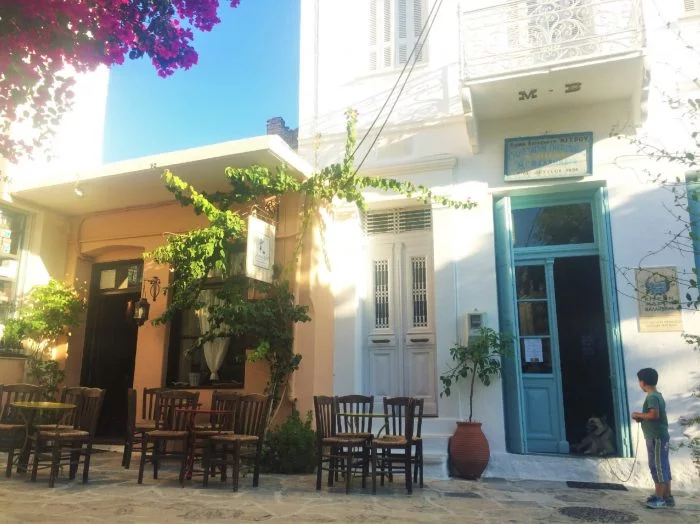
While the medieval city of Kástro and Bourgos are among the most visited spots on Naxos, to truly experience the island’s deep traditions and historical character, one must explore its mountain and fishing villages.
Naxos is home to 46 historical villages, some tiny and hidden, some perched on mountaintops, and others by the sea. Each one is a treasure, with its traditional cafés, bakeries, tavernas, churches, and the elderly sitting around tables chatting throughout the day, offering a glimpse into local life.
Located in the southeast of Naxos, the Trageá plateau is a region that boasts breathtaking views of villages and hiking trails scattered across the foothills of olive tree-covered mountains, extending down from the peak of Mount Zas, which rises 999 meters above sea level.
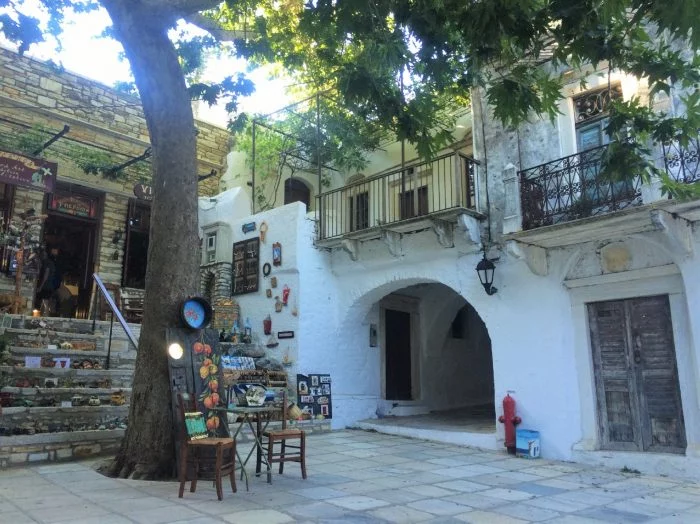
In this region, there are beautiful villages hidden between the hills that you can reach via backroads:
The first is the charming medieval village of Halki. With its traditional tavernas shaded by historic trees and vines in the main square, Venetian towers, and art-nouveau houses, it’s a very photogenic village. Hikers and climbers can enjoy the views by starting from Potamiá and following the Flerió – Kourounohóri – Melanés route, reaching Halki in 90 minutes. Alternatively, you can explore the village and nearby towers, the Byzantine-era Ágios Geórgios Diasorítis Church, and the stunning landscapes by walking a 6-kilometer route in Halki.
Another picturesque village is Aperáthou (Apíranthos). With its historic marble-paved streets, you can sense the glory of this village. It has cafés and tavernas offering beautiful views to the southeast. If you love steep and challenging climbs, you can hike to the ancient church of Agía Kyriakí in Moní to the northwest.
After passing through the Stavrós Keramotís pass, you will arrive at Kóronos, Naxos’ windiest village. With its narrow streets and alleyways arranged to flow down the slopes, this village feels like a place suspended in time.
If you head 10 kilometers south from Aperáthou, you’ll find the tiny fishing village of Moutsoúna, located at a small cove. With its beach and small tavernas, it’s a charming settlement.
Kinidaros village is famous for its bakery and musicians. The bread from the wood-fired oven is the best on the island, and in the evenings, you can witness impromptu performances by local musicians at the village taverna.
Completely remote, the village of Keramoti, suspended in time in a secluded valley, is the starting point for the hiking and climbing routes leading to the Routsouna waterfalls.
Naxos Beaches

The long sandy beaches stretching along the western coast of Naxos are perfect for sea lovers, while the constant winds make it an ideal destination for windsurfing enthusiasts.
The most crowded beaches are Agia Georgios, within walking distance from the old town of Naxos, and the closest beaches to the city: Ágios Prokópios and Agía Ánna.
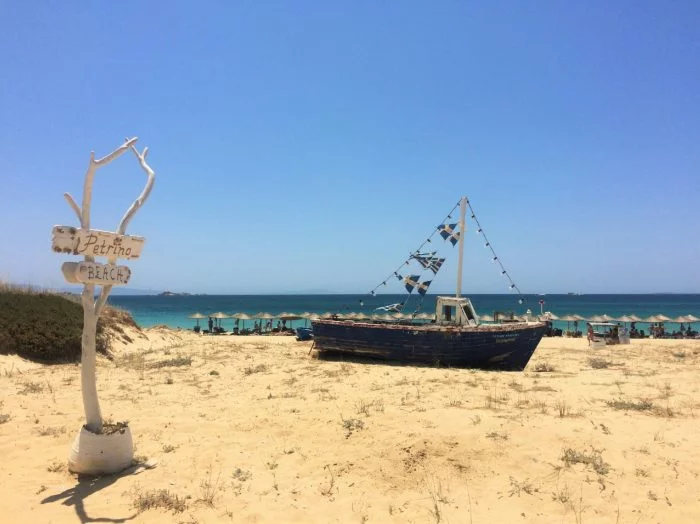
Next are Maragas and Pláka beaches, which also have many beach clubs and facilities, but are less crowded and offer a more peaceful atmosphere.
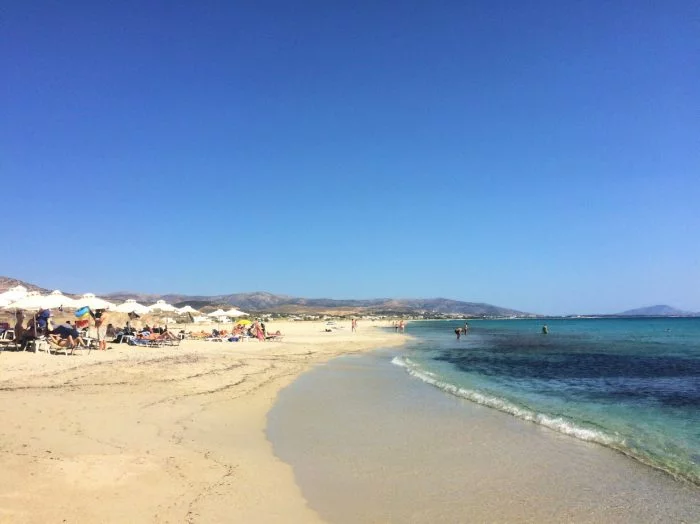
Orkós beach, with its constant thermal winds, is like a paradise for kite surfers.
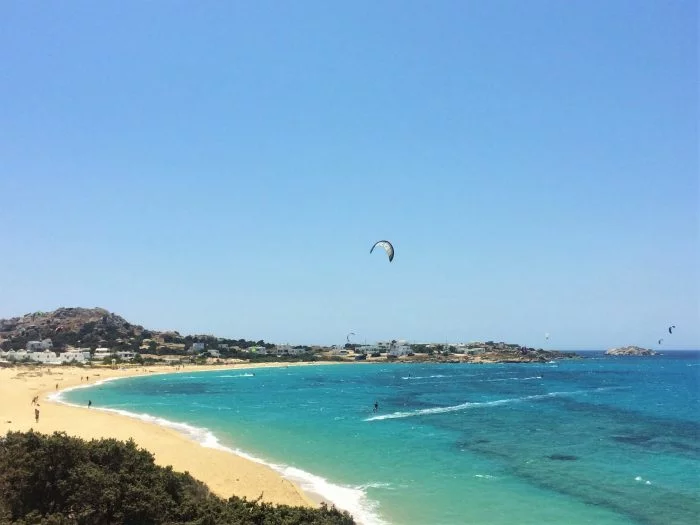
As you head south, the number of sand dunes increases while the number of facilities decreases, and nudists begin to appear. Mikri Vígla, Kastráki, and Glyfáda beaches are more secluded and pristine, with only a few facilities scattered along the shore.
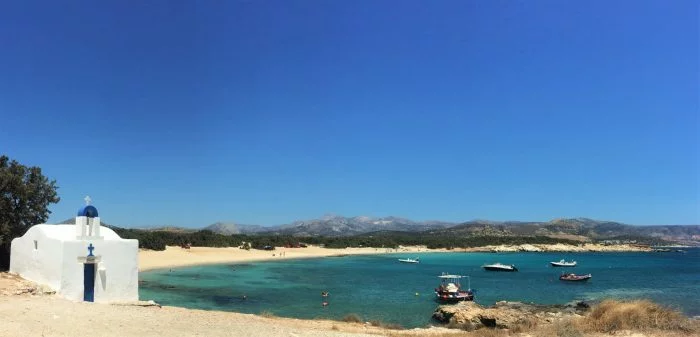
If you’re looking for the perfect secluded beach, Alykó is the place, with its tiny coves adorned with juniper berries. This untouched rocky cape, frozen in time, has one downside: a construction that began during the junta period between 1967–74 but was later abandoned. However, when you’re down in the small coves descending from both sides of the cape, you don’t see this construction.
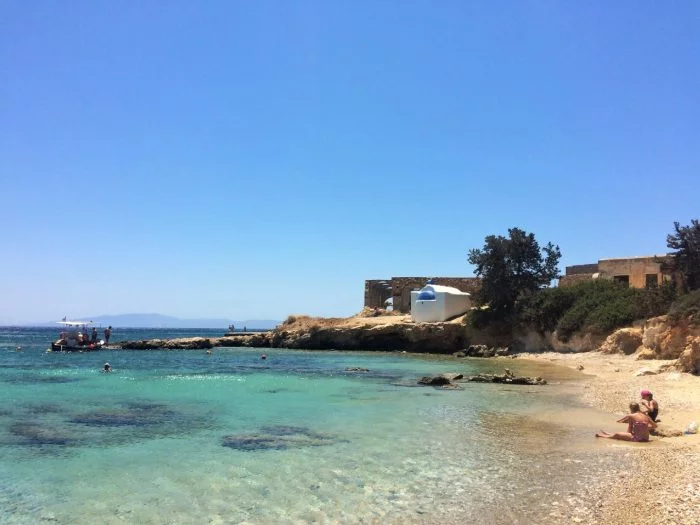
After the Alykó cape, the sheltered beaches of Pyrgáki and Agiassós are true hideaways, perfect for solitude.
Restaurants and Cafés in Naxos
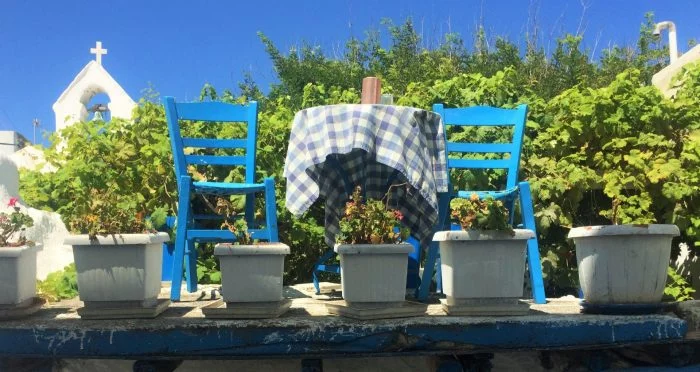
Naxos Old Town Addresses
While strolling through the streets of Kastro, stop by 1739 Café on the terrace of the Ursuline School and visit Apodo Hellenic Design Store.
Naxos Chora Restaurants*
Lithos: The new go-to dinner spot in Naxos is Lithos. Opened in May 2016 by designers Manola and Janny in a historic 1950s building on one of the narrow side streets of the old town, the restaurant offers modern twists on Greek cuisine. The Athens-based family, with roots in Naxos, serves amazing dishes such as 24-hour caramelized pork cooked with local spices, vacuum-cooked salmon with beans, or modern Revani. Guests can enjoy these delicacies in the street-side tables under the vines or in their beautifully decorated stone buildings from April to October.
Apostali: Located in a charming courtyard under the trees in one of the narrow streets of Chora, this restaurant serves Greek and Aegean flavors.
Sto Ladoharto: A paradise for meat lovers, this restaurant offers grilled, roasted, and stewed meats in its terrace restaurant with a view of the harbor.
Manolis Garden Taverna: The perfect place for those who love traditional Greek flavors and music at affordable prices.
Metaxy Mas: The best Greek taverna in Naxos for the perfect balance of price and quality.
Naxos Port Restaurants
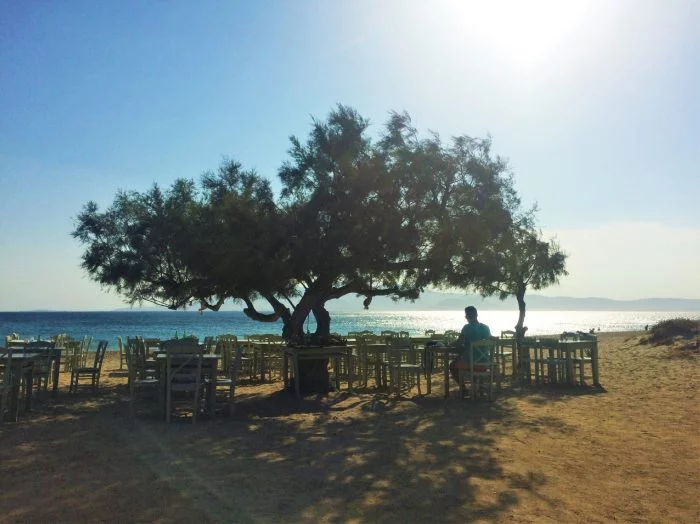
Strofili :New generation Aegean cuisine
Mezze 2 :Meze, fish & seafood
Boulamatsis Tavern :Traditional Greek home cooking
Nissaki Wine Bar & Restaurant : A modern restaurant located at Agios Georgios Beach
Beach Clubs and Restaurants on Naxos Beaches
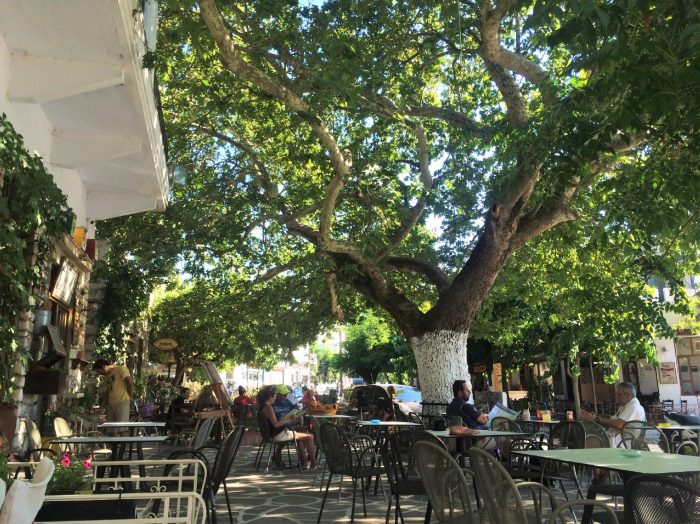
Agia Prokopis Beach:
- Fotis Taverna – Enjoy coffee on the small balcony above the sea
- Kahlua Beach Club – Beach club with sunbed and umbrella service, and lunch options
Agia Anna Beach:
- Ammo Beach Club, Santana Beach Club & Banana Beach Club – Beach clubs for swimming
- Akrogiali – A Greek taverna at Agía Ánna Beach, famous for fresh salads, magireftá (stewed dishes), and roasted goat, pork, and chicken
- Gorgona Taverna – Traditional Greek taverna
- Paradiso Taverna – Located between Agia Anna and Plaka beaches, offers a relaxing time under the trees with a frappe or early dinner
Plaka Beach:
- Yazoo Summer Bliss, Peppermint, Akti, Plaka Cafe Watersports Beach – Beach clubs
- Nikos & Maria Taverna and Petrino Restaurant – Plus the nearby Mitatos Ice Cream Shop
Orkos Beach:
- Flisvos Kite Center Naxos & Thalasea Kite Club – Kite surf clubs
Mikri Viglia Beach:
- Mikri Viglia Taverna
Kastraki Beach:
- Kastraki Paradise Taverna
Alyki Beach:
- Notos Seaside Cafe
Mountain Village Restaurants and Cafes in Naxos
- Axiotissa (on the way to Glyfáda via the Alykó road): Famous for its unique and extraordinary flavors, this restaurant serves a daily menu made from local organic ingredients. Dishes include Naxos cheese plate, rocket and xinomyzíthra (local soft cheese) salad, okra with shrimp and yogurt sauce, tuna carpaccio, sautéed mushrooms with chili and onion sauce, eggplant with almonds and pistachios, Naxos sausages, goat and rabbit, fig and plum panna cotta, and lemon liqueur cheesecake. (+30 22850 75107)
- Giannis – A traditional Greek taverna located in the village of Halki, serving daily fresh and delicious dishes. While in Halki, be sure to visit Era, a shop offering homemade artisan jams and marmalades.
- Berdema – A taverna in the village of Apeiranthos with a terrace offering refreshing views of the countryside, serving traditional Greek dishes. While in Apeiranthos, enjoy a crepe at Samardako.
- Platsa – Matina’s taverna in the village of Kóronos is famous for its traditional flavors.
- Giorgis – In the village of Mélanes, Chef Giorgis Xenakis is known for his delicious slow-cooked stews.
- Platanos Café – Located in the village of Filoti, offering a coffee break under the shade of a plane tree.
Nightlife Addresses in Naxos

Sunset Spots
- The Ocean Club
- Flamingo Café
- Bossa
- Patina
Bars
- The Ocean Club
- 520 Bar
- Jazz and Blues
- On the Rocks
- DaCosta Club
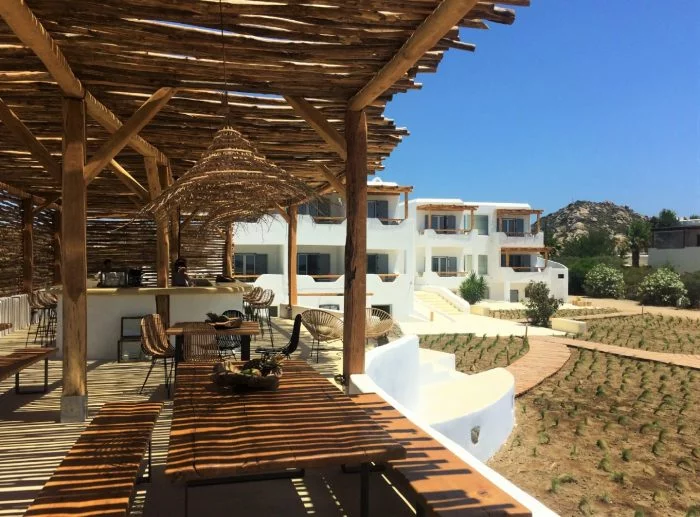
Hotels in Naxos
- Hotel Pantheon – Boutique hotel in Naxos Chora
- Panaroma Hotel, Despina’s Rooms, Chateau Zevgoli, Anixis Hotel – Hotels & guesthouses in the Bourgos neighborhood of Naxos Chora
- Glaros Boutique Hotel – Boutique design hotel located at the end of Naxos Port, near Agios Georgios Beach
- Nissaki Beach Hotel – Boutique hotel located at the end of Naxos Port, near Agios Georgios Beach
- Hotel Galini Sofia – Guesthouse located at the end of Naxos Port, near Agios Georgios Beach
- Naxian Collection – Luxury boutique villas with views of the old town of Naxos, located in the Stelida hills on the outskirts of Naxos
- Porto Naxos Hotel – 4-star resort hotel located at the end of Agios Georgios Beach
- Orion Naxos – Cool design hotel located at the end of Agia Anna Beach, near the entrance to Maragas/Plakes Beaches
- Naxian on the Beach Hotel & Cafe & Beach – Cool design hotel located on Plaka Beach
- Finikas Hotel and Alyko Villas – Hotels located at Alyko Beach
- AktiKastraki Hotel – Cool design hotel located at Kastraki Beach
- Motel Halki – Charming traditional boutique hotel located in a historic building in Halki Village
